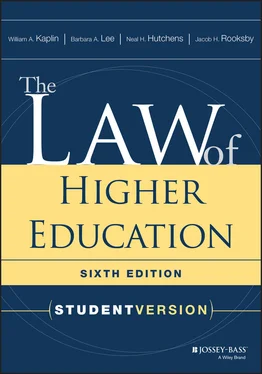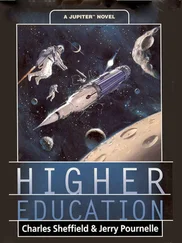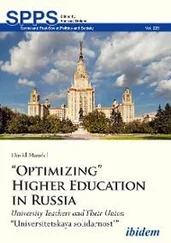The invalidation of RFRA's application to the states has serious consequences for the free exercise rights of both religious institutions and the members of their academic communities. The earlier case of Employment Division v. Smith (above) is reinstituted as the controlling authority on the right to free exercise of religion. Whereas RFRA provided protection against generally applicable, religiously neutral laws that substantially burden religious practice, Smith provides no such protection. Thus, religiously affiliated institutions no longer have federal religious freedom rights that guard them from general and neutral regulations of state and local governments that interfere with the institutions' religious mission. Moreover, individual students, faculty, and staff—whether at religious institutions, private secular institutions, or public institutions—no longer have federal religious freedom rights to guard them from general and neutral regulations of state and local governments that interfere with these individuals' personal religious practices. And individuals at public institutions no longer have federal religious freedom rights to guard them from general and neutral institutional regulations that interfere with personal religious practices.
In Illinois Bible Colleges Association v. Anderson , 870 F.3d 631 (7th Cir. 2017), a federal appellate court considered the applicability to religious institutions of a law requiring all degree-granting postsecondary institutions in Illinois to receive a certificate of approval and to be subject to state review over items that included facilities and finances. The plaintiffs included free exercise and establishment clause claims among their challenges to the law. The court found that no exception to the standards announced in Employment Division v. Smith was present to negate the law's coverage of religious institutions. The court rejected the free exercise claim, stating that the law was generally applicable, did not target religious institutions, and served a rational governmental purpose of “protecting legitimate institutions of higher education by safeguarding the value of their degrees” (870 F.3d at 639). The court also interpreted the law as not raising excessive entanglement issues, as the statute dealt with general standards and practices associated with the awarding of long-established undergraduate and graduate degrees in higher education.
There are at least three avenues that an individual religious adherent or a religiously affiliated institution might now pursue to reclaim some of the protection taken away first by Smith and then by Boerne . The first avenue is to seek maximum advantage from two important post- Smith cases— Church of the Lukumi Babalu Aye v. City of Hialeah , 508 U.S. 520 (1993) and Hosanna-Tabor Evangelical Lutheran Church and School v. E.E.O.C , 565 U.S. 171 (2012)—that limit the application of Smith . Under Lukumi Babalu Aye , challengers may look beyond the face of a regulation to discern its “object” from the background and context of its passage and enforcement. If this investigation reveals an object of “animosity” to religion or a particular religious practice, then the court will not view the regulation as religiously neutral and will, instead, subject the regulation to a strict “compelling interest” test. (For an example of a case addressing a student's First Amendment free exercise claim and utilizing Lukumi Babalu Aye , see Axson-Flynn v. Johnson , 356 F.3d 1277 (10th Cir. 2004), discussed in Section 7.1.4.)
In Hosanna-Tabor , the U.S. Supreme Court recognized a “ministerial exception” grounded in the Religion Clauses of the First Amendment that barred employment discrimination claims by a teacher at a church-affiliated school. The Court concluded that the special religious training and emphasis of the appointment qualified the teacher as occupying a position to which the ministerial exception applied. The Court distinguished Smith by describing it as a case involving “government regulation of only outward physical acts” while Hosanna-Tabor dealt with “government interference with an internal church decision that affects the faith and mission of the church itself” ( Hosanna-Tabor , 565 U.S. at 190).
The second avenue is to seek protection under some other clause of the federal Constitution. The best bet is probably to look to the free speech and press clauses of the First Amendment, which cover religious activity that is expressive (communicative). The U.S. Supreme Court's decisions in Widmar v. Vincent (see Section 10.1.5) and Rosenberger v. Rectors and Visitors of the University of Virginia (see Section 10.1.5) provide good examples of protecting religious activity under these clauses. Another possibility is to rely on the due process clauses of the Fifth and Fourteenth Amendments, which protect certain privacy interests regarding personal, intimate matters. The Smith case itself includes a discussion of this due process privacy protection for religious activity (494 U.S. at 881–82).
Yet another possibility is to invoke the freedom of association that is implicit in the First Amendment and that the courts usually call the “freedom of expressive association” to distinguish it from a “freedom of intimate association” protected by the Fifth and Fourteenth Amendment due process clauses (see Roberts v. United States Jaycees , 468 U.S. 609, 617–18, 622–23 (1984)). The leading case is Boy Scouts of America v. Dale , 530 U.S. 640 (2000), in which the Court, by a 5-4 vote, upheld the Boy Scouts' action revoking the membership of a homosexual scoutmaster. In its reasoning, the Court indicated that the “freedom of expressive association” protects private organizations from government action that “affects in a significant way the [organization's] ability to advocate public or private viewpoints” (530 U.S. at 648). The application of the principles of associational rights has arisen in higher education in the context of institutional nondiscrimination policies applied to acceptable membership or leadership rules for officially recognized student organizations. In Christian Legal Society v. Martinez , 561 U.S. 661 (2010) (see Section 10.1.4), students argued unsuccessfully that they should be allowed to set criteria for membership and leadership positions based on acceptance of religious beliefs of the student organization under the principles of Boy Scouts of American v. Dale .
The third avenue is to look beyond the U.S. Constitution for some other source of law (see Section 1.4of this book) that protects religious freedom. Some state constitutions, for instance, may have protections that are stronger than what is now provided by the federal free exercise clause (see Section 1.6.3below). Similarly, federal and state statutes will sometimes protect religious freedom. The federal Title VII statute on employment discrimination, for example, protects religious institutions from federal government intrusions into some religiously based employment policies (see Section 4.7) and protects employees from intrusions by employers into some religious practices. And some states have their own RFRA-type statutes that protect religious exercise (see, e.g., Fla. Stat. Ann. § 761.01). As of 2019, 21 states had passed laws similar to the RFRA ( http://www.ncsl.org/research/civil-and-criminal-justice/state-rfra-statutes.aspx).
1.6.3 Government support for religious institutions and their students and faculty members.This section focuses on various situations in which a government agency either (1) provides financial aid to religious colleges and universities, or their students or faculty members; or (2) refuses to do so. The first type of situation may implicate the establishment clause of the First Amendment, and the second type of situation may implicate the free exercise clause of the First Amendment. Sometimes the situation may implicate both clauses. The U.S. Supreme Court has often asserted that courts should interpret these clauses so that they work together to create a condition of “religious neutrality” (see Section 1.6.1above). In addition, some state constitutions have their own establishment clauses that are more restrictive than the federal clause, and these clauses may sometimes be implicated as well.
Читать дальше












